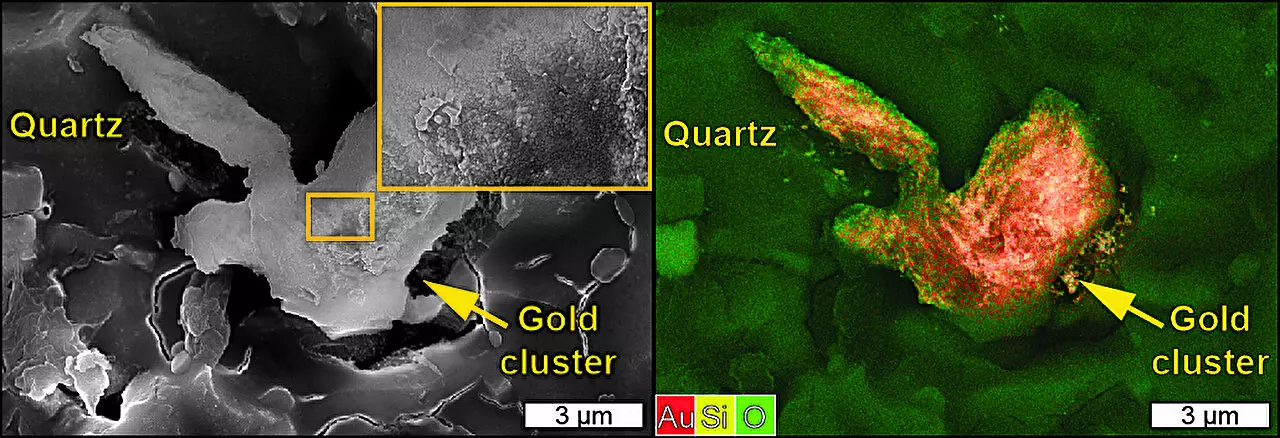Gold nuggets, with their timeless allure and value, have inspired countless adventures and pursuits throughout history. From the crazed gold rushes of California to modern mining efforts across the globe, the quest for these rare treasures has illuminated much about the Earth’s geological history. However, the mechanisms behind their formation have remained enigmatic—until now. Recent research from Monash University has unveiled a groundbreaking theory involving piezoelectricity, suggesting that the process of gold nugget formation might be driven by seismic activity, adding a new dimension to our understanding of this natural phenomenon.
Traditionally, geologists propounded that gold precipitated from hydrothermal fluids—a process during which heated, mineral-rich water flows through cracks within the Earth’s crust. According to this theory, as the fluids cool or undergo changes in chemistry, the gold becomes supersaturated and precipitates, ultimately becoming trapped in the surrounding quartz. Nevertheless, this explanation has always raised questions, especially in relation to the substantial sizes of some gold nuggets. The concentration of gold within the fluid, as per conventional wisdom, should not have facilitated the growth of such large deposits.
Dr. Chris Voisey, leading the study at Monash University, and his team sought to address this discrepancy. In doing so, they introduced an innovative perspective, suggesting that piezoelectricity—a phenomenon known across various sectors, including electronics and materials science—may have a role to play in the formation of gold nuggets.
Piezoelectric materials, notably quartz, exhibit the ability to generate an electric charge when subjected to mechanical stress. This natural property has applications in a range of devices, from watches to BBQ lighters, showcasing how even slight pressure can produce significant electrical output. The question arose: could stress generated by seismic activity similarly generate electric charges within quartz, thereby facilitating the deposition of gold?
To explore this theory, the research team undertook experiments to simulate the conditions that quartz might encounter during an earthquake. They submerged quartz crystals in a gold-rich solution and subjected them to mechanical stress, mimicking the tectonic movements characteristic of seismic events. What transpired next was nothing short of revolutionary.
Upon inspection, the quartz crystals exhibited remarkable transformations. The stressed quartz not only deposited gold electrochemically but also facilitated the formation of nano-scale gold particles. In a fascinating twist, researchers observed that gold preferentially coated existing gold grains instead of forming entirely new deposits. This finding suggested a systematic process in which the gold accumulation became self-reinforcing; once a nucleus of gold formed, it subsequently attracted further gold deposits, effectively plating and enlarging existing grains.
“The quartz acts as a natural battery, with gold serving as the electrode,” Dr. Voisey explained. He noted that repeated seismic stresses could generate piezoelectric voltages powerful enough to enhance the reduction of dissolved gold in the surrounding fluids, thereby precipitating the growth and aggregation of significant gold deposits over time.
This new model presents an exciting paradigm shift in our understanding of gold mineralization processes. Not only does it provide insight into the geological conditions under which large gold nuggets form, but it also emphasizes the interconnectedness of Earth’s physical processes. The relationship between mechanical stresses from earthquakes and electrochemical processes highlights a dynamic synergy often overlooked in traditional geological studies.
While further research is necessary to fully comprehend the implications of these findings, the combination of geology, chemistry, and physics opens a doorway to a more detailed exploration of ore-forming processes. It aids geologists not just in locating potential deposits, but also in understanding the geological history that led to such treasures still waiting to be unearthed. Ultimately, this study not only addresses longstanding questions surrounding gold nugget formation but also enriches our appreciation of Earth’s complex systems and the natural phenomena that shape them.


Leave a Reply